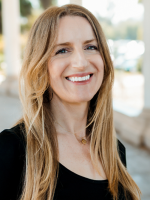"The Space Between: Texture Studies by Denja Harris"
11 a.m. to 5 p.m. Wednesday through Sunday. Through Oct. 12 | Oceanside Museum of Art, 704 Pier View Way, Oceanside | Free-$15 | MORE INFO
Denja Harris is a San Diego-based fiber artist who creates rug-tufted textiles and soft sculptures exploring ideas of softness, potential and the unknown. Her first solo museum exhibition, "The Space Between: Texture Studies by Denja Harris," recently opened at the Oceanside Museum of Art, representing a major breakthrough in her career.
Harris is particularly motivated by exploring perceptions of softness in Black women.
"Softness, to me personally as a Black woman, I feel like I am a little bit misunderstood and perceived harder and harsher than I actually am," she said.
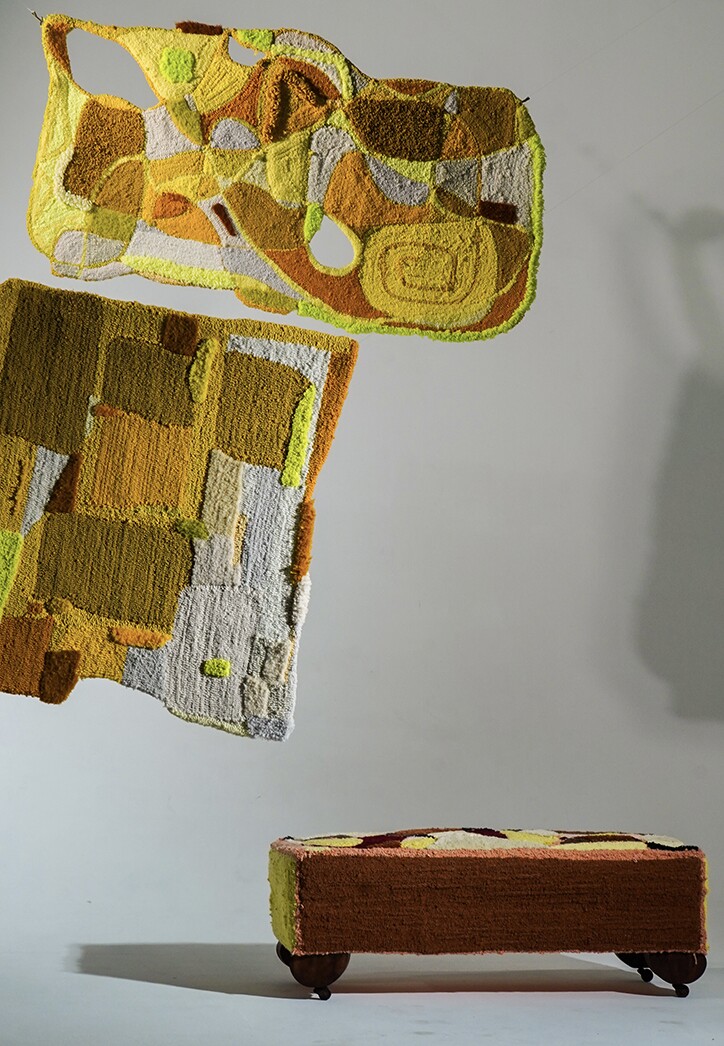
Her work also digs into the interplay between contemporary art and craft — or what she used to call "grandma hobbies."
From rug-like pieces and suspended, tendrilled yarn wall pieces to stuffed plush chains dotted with spikes, her sculptures are unexpected and familiar at the same time, with vivid, captivating color palettes and surprising use of shape and scale. In this way, Harris' use of comforting textures is as disruptive as it is approachable.
"I want people to look at my work and recognize a familiar item like yarn — you make sweaters, you make socks out of it — but they see it reimagined in a different way, so they don't feel as intimidated by going to museums or visiting galleries. I didn't grow up in art spaces. I'm still working to feel totally comfortable in art spaces … and I would love to bridge that gap," Harris said.
Interview highlights
On 'the space between'
"The space between" to me has a lot of different meanings. Once you go to the exhibit, the obvious one is it's separated — the exhibit is separated kind of by a walkway, so there's two galleries. So, there's a little bit of a space between the two sides.
And on a personal level, you asking a question about where I see myself bleeds into that. I feel like I am in a space between where I was, where I'm going, where I want to be.
And I think that even if I try to plan for my future — especially with this exhibit, I tried to plan for it a year in advance. And everything that could have gone wrong kind of did.
I think it's also just like part of enjoying the space between where I am, and not trying to control everything if I face a lot of resistance to my progress. But I look at it as: if I am facing resistance and I'm still brave enough to push through, then I think I'm moving in the right direction. The exhibition's kind of just like embracing the unknown. The only way out of it is through it and, you know, you can't control anything. You just have to get through it.
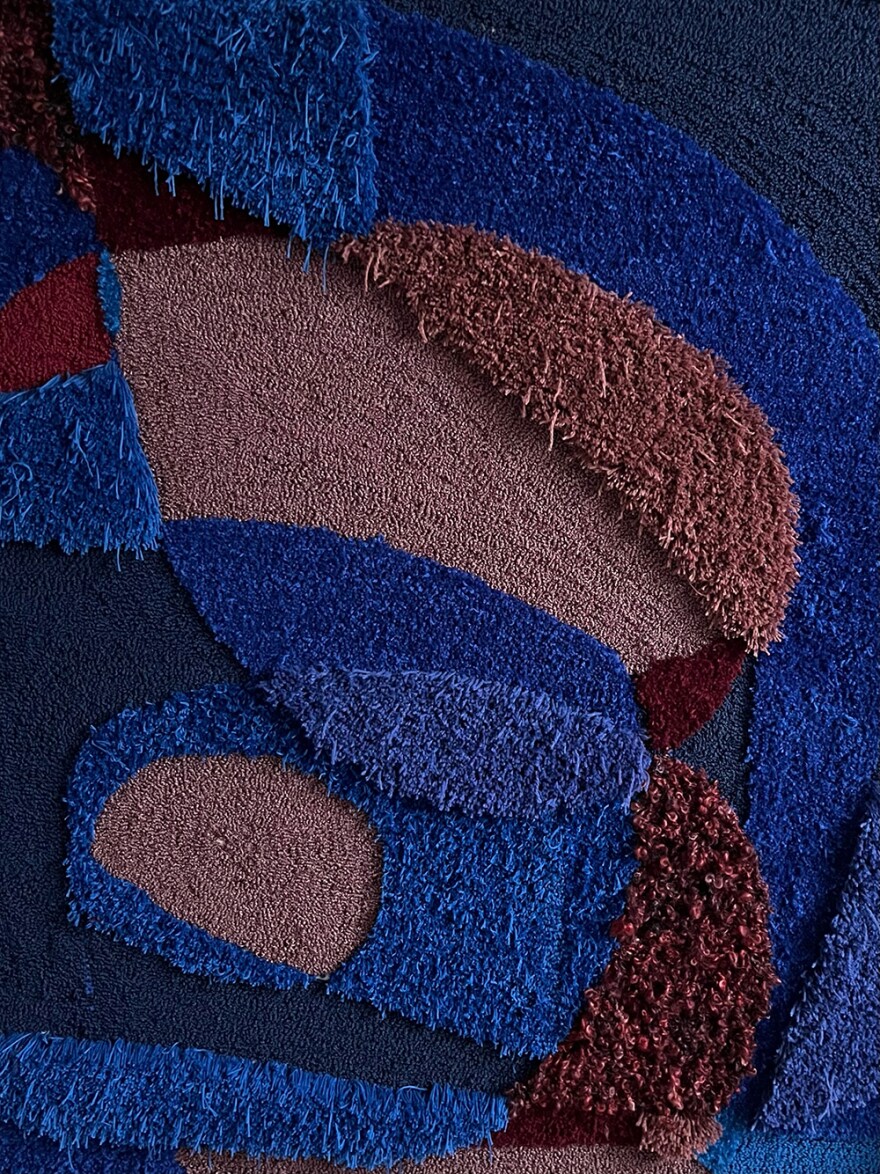
On embracing softness
I have "soft" tattooed on my arm. I'm a sensitive Capricorn. I think I just want to, with my art, reframe the way that Black women — and darker-skinned Black women specifically — are maybe viewed by others.
I think embracing softness in whole, no matter if you're Black or whatever, is important, especially with everything that's going on in the world. Because life is too short to not embrace being the tough guy and having your guard up.
On becoming an artist
I've always been creative — like crafting. But I will say that I probably first started intentionally making art after 2021, after my first — I don't know if I want to call it a solo exhibition but display — at Mortis Studios.
I don't think I thought of it as art. I think I thought of it more as like crafting. Before I started tufting, I was hand-embroidering on vintage clothes or textiles. And I think when I would post to Instagram, I would hashtag "grandma hobbies." So I don't think I was intentionally thinking of it as art.
I am self-taught. I didn't go to art school. I actually didn't go to college, I think I took a few semesters, so I'm completely self-taught. I will say that I love to study everything. I love learning, so I will go down rabbit holes and deep dive and read it and Google and YouTube and teach myself everything. I know a lot of useless information.
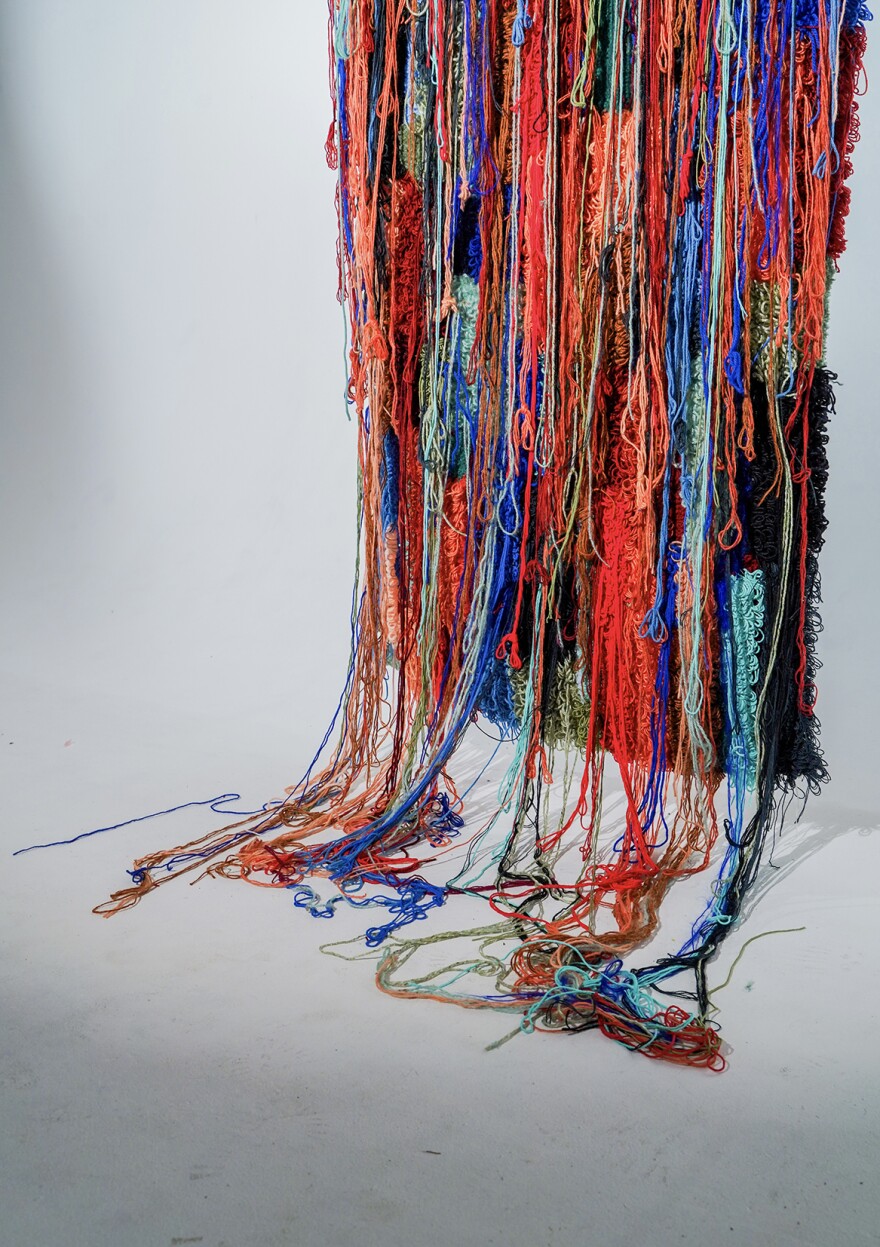
I think the bravery comes from pushing myself and sharing it with the world. The motivation behind that is I don't want to be stuck in the same place forever. I like to grow and expand and evolve. I think that's important.
I think I just get inspired and want to make something, I think my brain moves really fast, and I have to get that energy out somehow. I think the motivation is definitely self-driven, but I don't know where it comes from … just to create. Whatever is inside of me, get that out. I don't exercise, I don't run, so I think making art for me is some sort of somatic release that others can find in other ways. But for me, I get it through art.
On milestones and growth
My museum exhibition is like a huge goal that I achieved. I didn't think I would achieve it, let alone this early in my art career. So I think I just want to continue to be able to show my work — in maybe larger institutions, maybe get gallery representation.
I still consider myself a baby artist, so I'm still kind of learning what is important for my growth as an artist. So yeah, if I die tomorrow, I think I'm very happy with what I've done this far.
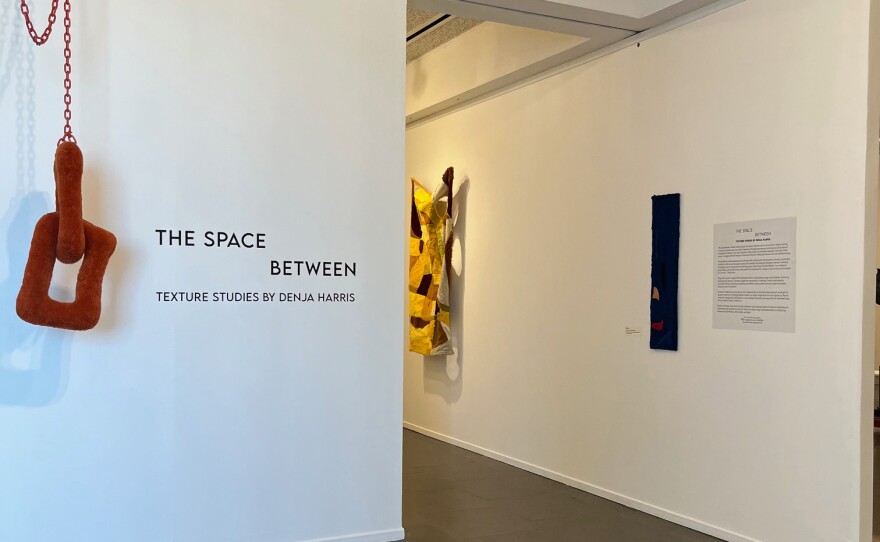
On craft and disrupting the fine art spaces
I think (rug tufting) is often looked at as craft — or especially fiber art, maybe like women's work. I would like to bridge the gap between accessibility and fine art. I want people to look at my work and recognize a familiar item like yarn — you make sweaters, you make socks out of it — but they see it reimagined in a different way, so they don't feel as intimidated by going to museums or visiting galleries. I didn't grow up in art spaces. I'm still working to feel totally comfortable in art spaces, and that's just probably like my own thing, but I would love to bridge that gap. And I think that's also what "the space between" kind of means to me. Like, bridging the gap between where I came from and people like me and going into fine art and museum institutions.
On sustainability and dead stock yarn
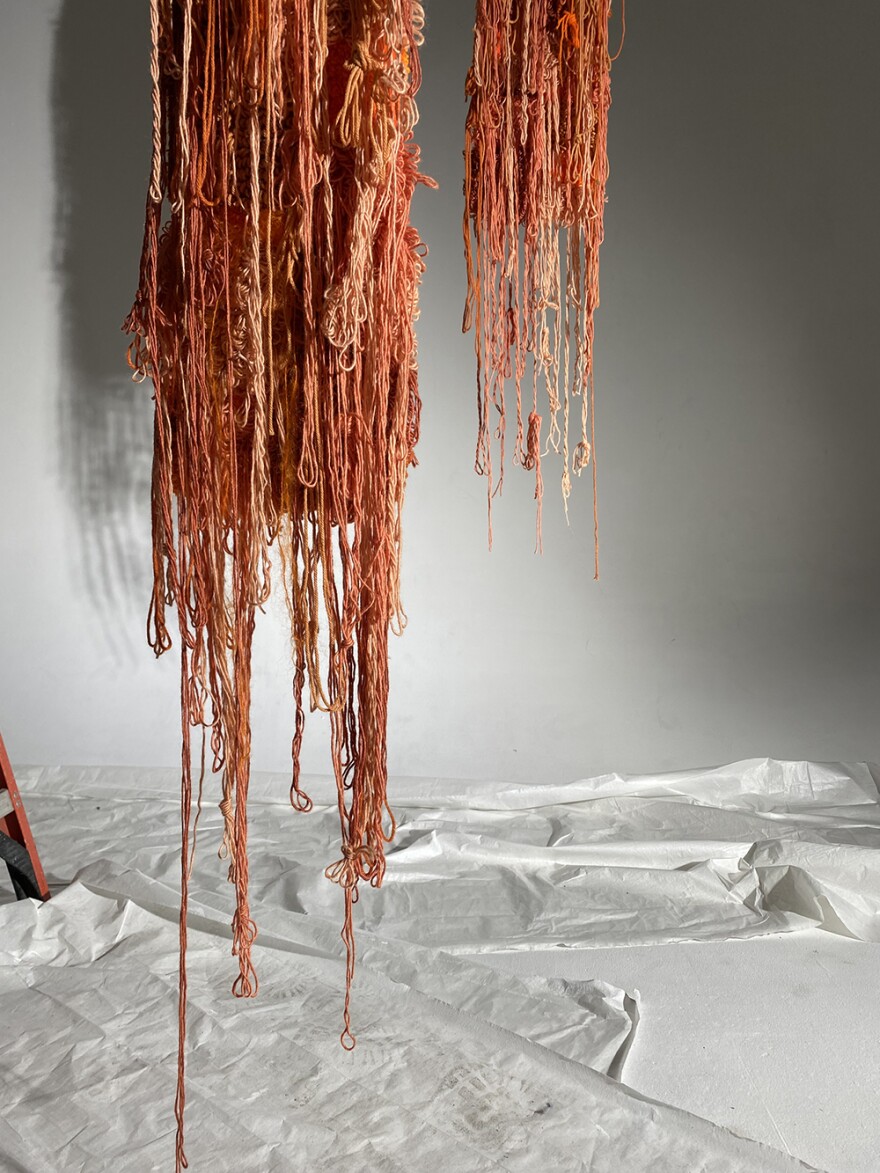
Dead stock is a term for clothes or yarn that was not used from the time it was manufactured to now. So it will likely still have like the tags on it, still be within the plastic wrapping, but it's just from years ago.
In my field of — maybe not fiber art but to be very specific to my niche in tufting — I think that there's a lot of maybe unnecessary waste with yarn and projects maybe not having the life, the long life that they deserve. So, with my pieces, I try to repurpose yarn from thrift stores. I would do that regardless because that's just one of my hobbies, but I do seek it out intentionally. I go to yard sales, estate sales.
I do think it's really important to not not add to the waste. I've been seeing a lot of videos of the beaches in Ghana, and I don't want to contribute to that kind of waste.
On creative influences
Sheila Hicks is a really big influence and inspiration. I love her work — the texture, the color. I think she's phenomenal.
I'm really into music and thrifting and subcultures, so, I'm inspired by things I would seek out naturally. If I'm going thrifting and I see a vintage sweater that has a certain color pattern or something — two colors together that clicks in my brain — and I'm like, OK, I'm inspired for the next piece with this color palette.
A piece of my early work was inspired by Tower Bar. Like, driving on maybe I think it was the 805, you can see the tower, and it's black and white checkered — and it's kind of like Bauhaus inspired.
On what she wants people to take away
I want them to feel something. I want them to feel good, joy, inspired, happy, free. I want them to look within and just maybe think and contemplate anything really. I'm not sure. I think I'm still learning what I want people to think with my art. I think I'm also still learning what I want to say with my art.


